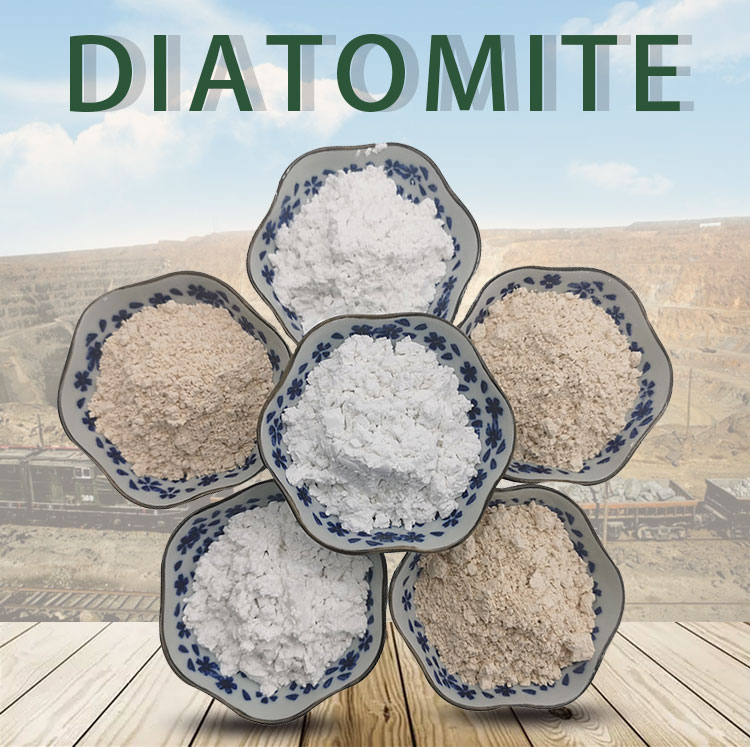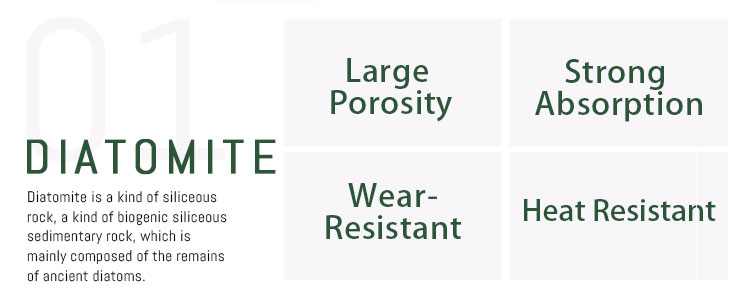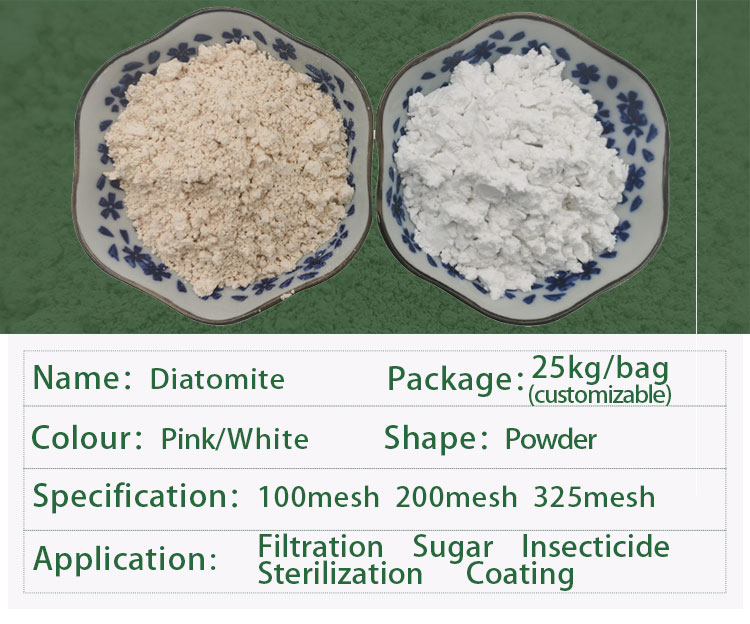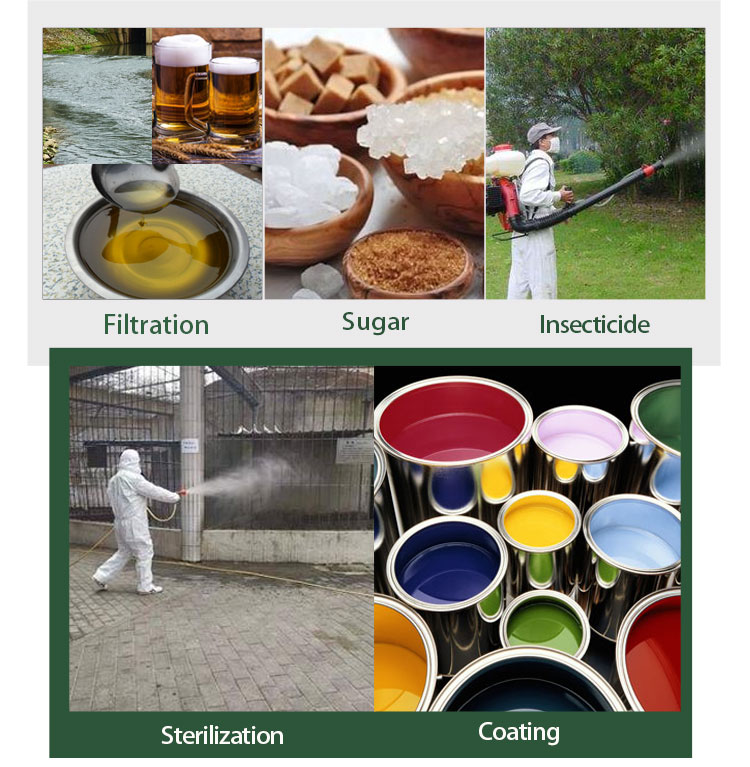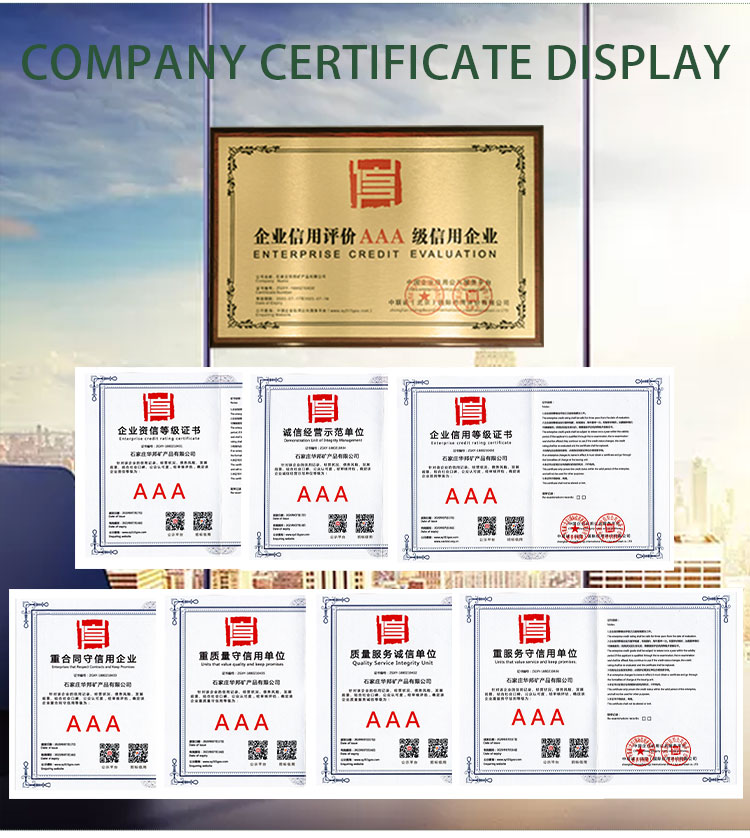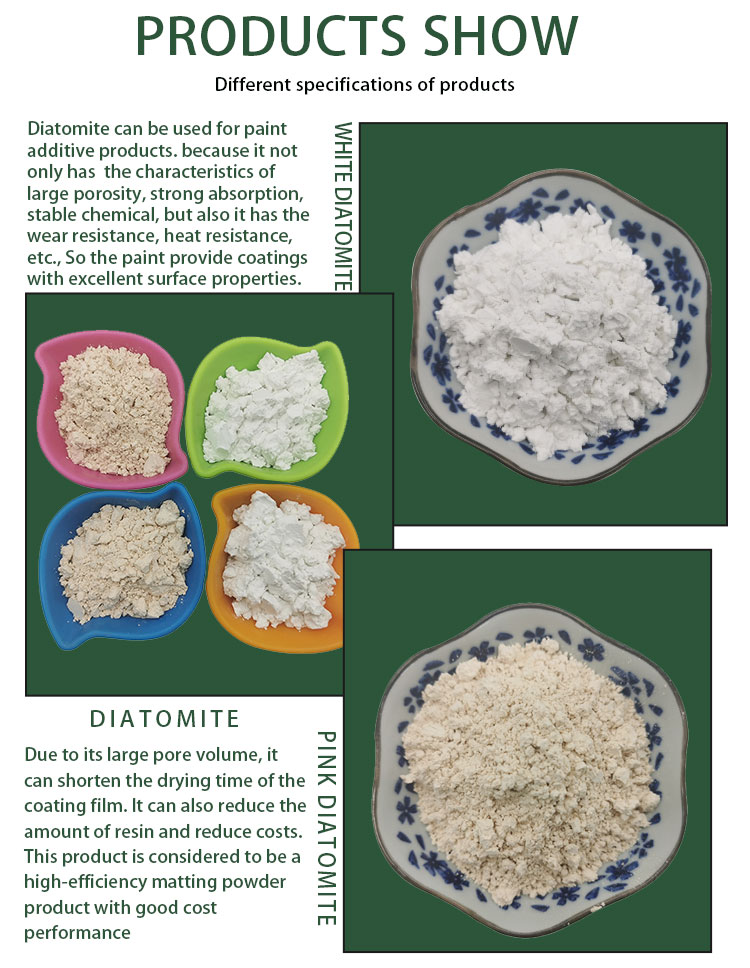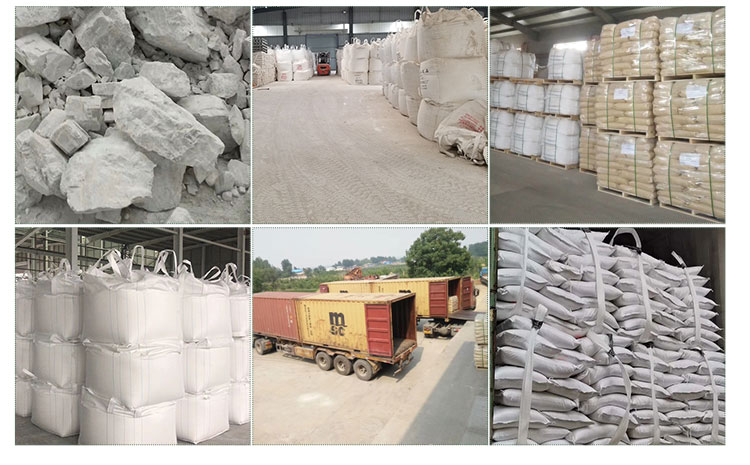-
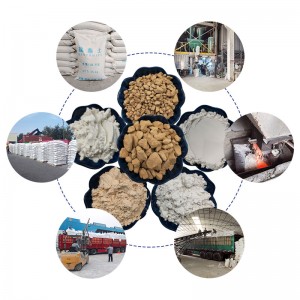
Huabang diatomite powder for filtration industry water purification cosmetics prouct industry applications
Type
diatomite powder and diatomite graunlesGrade
food grade, industrial grade, chemical grade, pharmaceutical grade and agricultural grade .Color
diatomite powders / diatomaceous earth powders : white, grey and pink
diatomite graunles / diatomaceous earth graunles: orange, yellowishApplication
Condiments: monosodium glutamate sauce vinegar.
Beverage industry: beer, white wine, yellow wine, wine, tea, tea beverage and syrup.
Sugar industry: fructose syrup, high fructose syrup, sugar syrup, sugar beet sugar beet sugar honey.
Medicine: antibiotic synthetic plasma extract of vitamin a Chinese medicine.
Water treatment: water industry wastewater of water industry, swimming pool water bath water; Industrial oil products: lubricating oil additive machine plus cooling oil transformer oil metal plate foil rolling oil.
Other: enzyme preparation plant oil seaweed gel electrolyte liquid milk products citric gelatin bone glue. -

Diatomite powder for filtration industry water purification cosmetics product industrial applications
Diatomaceous earth powder is a remarkable substance derived from the fossilized remains of diatoms, which are single – celled algae. These diatoms thrived in bodies of water such as oceans, lakes, and rivers millions of years ago. As they died, their silica – rich cell walls accumulated on the bottom, gradually forming sedimentary deposits that are the source of diatomaceous earth.
One of the most distinctive features of diatomaceous earth powder is its highly porous nature. Microscopically, it reveals a complex network of tiny, interconnected pores. These pores vary in size, typically ranging from a few nanometers to several micrometers. This porosity gives the powder an extremely large surface area per unit mass, which is crucial for its many applications. For instance, in filtration processes, the pores can trap particles of various sizes, acting as a natural sieve.
-

Manufacturer offers ceramic luminous stones and resin luminous stones in various colors
Luminous stones, also known as glow – in – the – dark stones, derive their magic from photoluminescent properties. Typically composed of minerals like strontium aluminate or zinc sulfide, these stones absorb ambient light (UV or visible) and reemit it as a soft glow.
Natural luminous stones are rare, often found in volcanic rocks or mineral veins with specific trace elements. Synthetic variants dominate the market, produced by blending phosphorescent pigments with binders like glass or resin. The manufacturing process involves high – temperature sintering to activate the phosphors, ensuring prolonged glow duration.Applications span decorative landscaping (glow paths, garden ornaments), safety signage (emergency exits), and crafts (jewelry, artworks). Their ability to glow without electricity makes them eco – friendly. Notable examples include Chinese “glow – in – the – dark jade” and modern luminous aggregates for concrete. Proper light exposure enhances their luminosity, making them both functional and aesthetically unique. -

Colored sand for roof decoration coffee shop decoration floor laying flower bed decoration
Colored sand, a vibrant and versatile material, consists of natural or synthetic granules dyed to achieve vivid hues. Natural variants are derived from minerals like quartz, feldspar, and mica, mined in regions such as the U.S., China, and India. Synthetic colored sand is often produced by coating silica sand with inorganic or organic pigments, allowing precise color control.The manufacturing process for natural colored sand involves crushing, washing, and sieving raw minerals to remove impurities, followed by pigmentation through methods like dyeing or sintering. Synthetic sand undergoes surface treatment to ensure color adhesion and durability. Key properties include chemical resistance, UV stability, and particle uniformity, which vary based on application needs.
-

Wollastonite powder for building materials ceramic products coating industry metallurgical manufacturing
Wollastonite powder, a versatile mineral composed of calcium metasilicate, finds extensive applications across various industries due to its unique physical and chemical properties. In the ceramics industry, it serves as a game-changer. For example, tile manufacturers often incorporate 10-15% wollastonite powder into their formulations. This addition significantly reduces the shrinkage rate during firing by up to 30%, minimizing the occurrence of cracks and deformations. As a result, the production yield increases, and the tiles exhibit enhanced hardness and scratch resistance, making them ideal for high-traffic areas like shopping malls and airports.
In plastics manufacturing, wollastonite powder acts as an excellent reinforcing filler. A leading automotive parts supplier added 25% wollastonite powder to polypropylene to produce lightweight door trims. The modified material not only improved impact strength by 40% but also reduced warpage, ensuring a perfect fit during assembly. This innovation helped the company cut production costs by 18% while meeting strict automotive safety standards.The paint and coating sector also benefits greatly from wollastonite powder. When formulated into exterior paints, its acicular crystal structure creates a barrier against water and UV radiation. A case study showed that buildings coated with paints containing 12% wollastonite powder maintained 80% of their original color after three years, compared to only 60% for conventional paints. -

Mica powder for electrical appliances welding rods rubber plastics papermaking paints coatings product
Mica powder is derived from natural mica minerals (e.g., muscovite, biotite), processed via crushing and grinding to exfoliate their layered structure into fine particles. Mined globally (India, China, US), it features high dielectric strength (ideal for capacitors and electronics insulation), thermal stability (withstands 600°C+), and reflective properties. In cosmetics, ultra-fine grades create shimmer in makeup; in paints/plastics, it enhances weather resistance and mechanical strength as a reinforcing filler. Industrial uses include thermal insulation in appliances, fireproof coatings, and as a release agent in rubber manufacturing. Its chemical inertness and versatile particle sizes make it essential across electronics, construction, and personal care sectors.
-

Himalayan salt bricks for barbecue industry desktop decoration wall decoration sushi placement
Mined from the Khewra Salt Mine in Pakistan, these pink-hued bricks are formed from 250-million-year-old sea salt deposits, rich in 84 trace minerals. Renowned for their natural ionizing properties, they purify air by attracting pollutants, enhance mood via negative ion release, and create a soothing microclimate. Popular as decorative room accents, they’re also used in spa treatments—heated for muscle relaxation or as countertops for holistic cooking. Their antibacterial surface resists microbes, while the warm, amber glow adds a rustic-luxury vibe to spaces. Whether for air purification, wellness rituals, or aesthetic appeal, Himalayan salt bricks blend geological heritage with contemporary health benefits.
-

Colored sand for wear resistant flooring materials shopping center industrial plant office building
Colored sand is a versatile granular material available in natural and artificial forms. Natural colored sand is extracted from rocks and minerals containing pigments. For example, iron oxide gives it red and brown shades, while manganese can produce black or purple hues. After mining, the ore undergoes crushing, sieving, and washing to achieve the desired particle size and purity.
Artificial colored sand, on the other hand, is made by coating or dyeing base materials, usually quartz sand. Advanced pigmentation techniques ensure long – lasting, vibrant colors and consistent quality.
This material has diverse applications. In landscaping, it creates eye – catching pathways and garden beds. Artists use it in sand paintings and glass art. In construction, it adds color to concrete, plaster, and paint, enhancing the visual appeal of buildings. Additionally, it is popular in DIY projects and educational activities due to its rich colors and ease of use.
-

Iron oxide pigment for building materials concrete mortar soap textile materials plastic products
Iron oxide pigments are inorganic colorants derived from iron oxides. They come in various colors, including red, yellow, and black, thanks to different oxidation states of iron. These pigments are highly stable, resistant to UV radiation, weathering, and chemicals. Widely used in paints, coatings, plastics, and construction materials, they not only provide rich, long – lasting colors but also enhance product durability, making them essential in modern manufacturing.
-

Iron oxide pigment for cement concrete colored fabric plastic products
Iron oxide pigments are inorganic colorants widely used in various industries due to their excellent properties, such as high color fastness, chemical stability, and weather resistance.
In the construction industry, they are commonly used to color concrete, bricks, and paving stones. By adding iron oxide pigments, these building materials can achieve a wide range of colors, from earthy reds and browns to yellows, enhancing the aesthetic appeal of structures. In paints and coatings, iron oxide pigments serve as key color – providing components. They not only offer rich and vivid colors but also improve the durability and UV resistance of the coatings, protecting surfaces from fading and degradation.The automotive industry utilizes iron oxide pigments to color vehicle finishes, ensuring long – lasting and attractive paint jobs. In the plastics industry, these pigments are added to color plastic products, maintaining their hue even under harsh conditions. Additionally, iron oxide pigments find use in the production of inks for printing, cosmetics for coloring, and art supplies like paints and pastels, thanks to their non – toxicity and stability.
-

Iron oxide pigment for building materials concrete mortar soap textile materials plastic products
Iron oxide pigments are inorganic colorants derived from iron oxides. They come in various colors, including red, yellow, and black, thanks to different oxidation states of iron. These pigments are highly stable, resistant to UV radiation, weathering, and chemicals. Widely used in paints, coatings, plastics, and construction materials, they not only provide rich, long – lasting colors but also enhance product durability, making them essential in modern manufacturing.
-

Iron oxide pigment for building materials concrete mortar soap textile materials plastic products
Iron oxide pigments are inorganic colorants derived from iron oxides. They come in various colors, including red, yellow, and black, thanks to different oxidation states of iron. These pigments are highly stable, resistant to UV radiation, weathering, and chemicals. Widely used in paints, coatings, plastics, and construction materials, they not only provide rich, long – lasting colors but also enhance product durability, making them essential in modern manufacturing.


